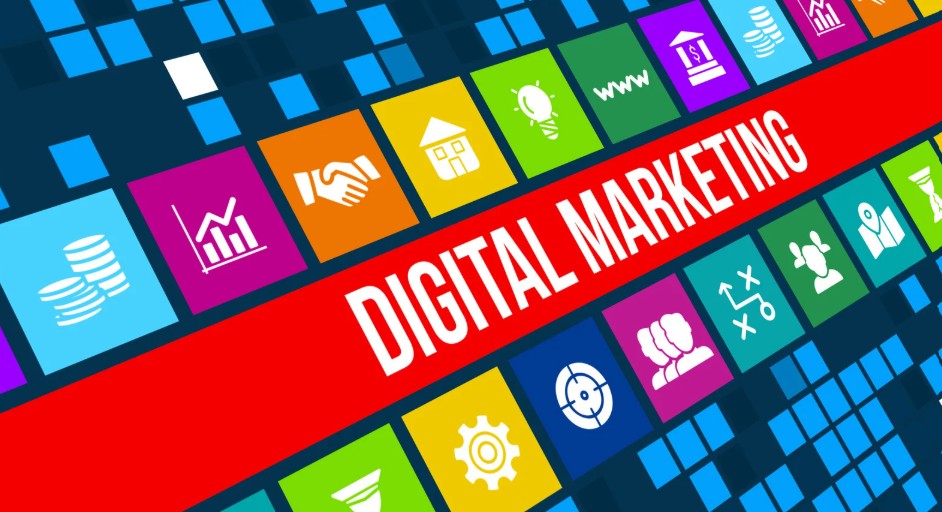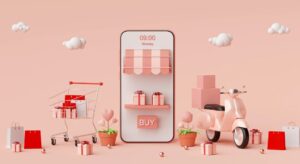
Digital Marketing Tactics That Generated £1M in Revenue for UK Retailers
Today, both online shops and brick-and-mortar competitors add to the challenges retail has always been famous for. How they use digital marketing is often the difference in great success and great struggle.
Tested strategies that can convert customer engagement to profits deployed by UK retailers who made £1M in revenue. The strategies are designed to enhance customer acquisition, retention, and lifetime value.
These all were tactics that were vital for each business to grow. Whether it was using powerful tools such as Yotpo or leveraging new cutting-edge email strategies, everything helped us generate outstanding wins. Here, we’re going to deconstruct 10 of the best strategies that you can copy.
10 Digital Marketing Tactics That Generated £1M in Revenue:
1. Utilizing Yotpo for Reviews and Loyalty Programs
For retailers, Yotpo is a game changer. Helps brands to gather and showcase customer reviews that lead to builds trust. They help conversion rates and revenues by building trust.
And, Yotpo provides really robust referral and loyalty programs as well. This prompts repeat purchasing and customer referrals, both of which set the stage for sustainable growth. With Yotpo, retailers can create customer loyalty programs that help maximize customer lifetime value by rewarding visitors for consistent purchases.
For example, a customer could receive 10 points issued for every £1 spent, wherever those points can later be exchanged for discounts, complimentary products, or exclusive benefits.
The process runs by itself without any manual intervention due to automation. Upon making a purchase, the system instantly computes and credits the applicable points with which the customer is usually notified via email or SMS.
2. Email Marketing Automation

Email is and always will be the highest ROI channel. Stores which adopted the latest technology in automation, did better than the rest. Results-driven automated email flows triggered by customer activity, like abandon carts and post-purchase follow-up messages.
One example would be to segment the audiences based on the behavior and run specific campaigns. To begin with personalization will help you achieve higher open rates and valuable content will drive your conversions.
Birthday campaigns and exclusive offers are some of the other email marketing strategies adopted by top-performing retailers. Both these, in addition to making the customers feel special, leads to higher purchase frequency.
3. Curated and Tailored Product Suggestions
Right personalized recommendations increase sales by more than 70%. Past purchases, browsing history and preferences are traced by algorithms, which then yield tailored recommendations. Example:flexible basket, it is known that placing related products increases online basket sizes.
These recommendations are embedded by retailers in websites, emails, and even at checkout. Technical models like collaborative filtering and deep learning optimize the finer details of personalization to make it more effective and lead to astonishing growth.
4. Dynamic Retargeting Ads

Use dynamic retargeting campaigns to keep possible buyers engaged This type of ads which target customer based on the basket abandonment or recent browsing data. Conversion rates increase when you show customers the exact products they viewed on your app or website.
To give you an example, smart ads feature machine learning for predicting which customers are ready to make a purchase.
Real-time analytics to fine-tune these campaigns are at the disposal of marketers by platforms such as Google Ads and Meta. By using data science, coupled with efficient targeting of visuals, the performance of ads is optimized.
And stores can then synchronize their dynamic retargeting with their upsell. That way, you can ensure that the high-value customers buy and spend more.
5. Developing More Sophisticated Loyalty Programs
As for customer retention, loyalty programs work like magic. They rewarded repeat trade within loyalty systems devised by retailers earning £1M. Such programs incentivize shoppers to purchase a product, refer a friend, or write a review.
The lifetime value-maximizing retention programs are often based on tiered loyalty structures. More advanced platforms also analyze how members are using their card, and recommend offers based on loyal customer activity. This is an effective strategy to have a stable outflow of funds and curb customer leaving.
The psychological tricks like time-bounded offers in meditation programs lead to faster purchasing. Merging the Points with Exclusive Experiences Also Bridges Patrons to the Brand
6. Using Influencer Content as UGC
UGC generates trust and facilitates purchases. Retailers paired up with influencers to offer highly engaging UGC campaigns on social. Conversions increase when real people represent products to buyers.
Integrating UGC into product pages or ads takes the effectiveness of a retailer’s marketing strategy to the next level. UGC refers to customer-oriented content, such as images, videos, or user experiences that showcase the product in real life.
For example, if shopper shares image of their bought-out fit on social media, prospects can better imagine how the product appears in real life. Then we can leverage this content across all product pages as social proof or contextual proof of the quality and utility of the product.
7. SEO – Search Engine Optimization To Be Detected

SEO places brands firmly at the top of results. Those merchants that optimized for local and product-oriented searches are the ones that were the most effective in getting the revenue.
Technical practices such as implementing structured data and schema tags allow search engines to better understand content. Retailers also included long-tail keywords based on user intent. It helps in driving organic traffic effectively.
SEO optimization relates to product descriptions, mobile-friendliness and fast site loading speeds. When combined these practices make sure that the potential buyers discover you consistently.
8. Social Commerce Integration
UK retailers had the ability to reach customers as they would with social commerce, directly on platforms they were already using. Complete shopping experiences from product discovery to checkout can now take place entirely within social platforms.
For instance, shoppable product tagging in posts and stories helped brands reduce the friction in buying journeys. Social platforms like Instagram, TikTok, and Facebook provide for seamless product integration with social content.
That’s where customer retention programs that maximize lifetime value come into the equation and it links with social commerce: Giving back to followers engaged in brand activities.
Not only does this strategy strengthen communities, but it also ensures that users engage with your content time and again.
9. Chatbots and Customer Support Powered by AI
Retailers (investments in AI powered chatbots in particular, to elevate customers service) Chatbots offer round-the-clock support, resolving problems, and addressing queries on-the-spot. Lessens cart abandonment and boosts sales.
These bots come equipped with natural language processing (NLP), which enhances user interaction. They provide product recommendations, checking out assistance and shipping-related queries. A hassle-free service attracts customers to purchase later again.
The omnichannel support ensures chatbots can keep a record of the previous conversations that have been held with the customers due to CRM integration. Business is able to utilize this knowledge to provide personalized and proactive service.
10. eCommerce Design That is Optimized for Mobile

Mobile purchases hold a large share of online purchases today. Retailers focused their eCommerce sites on providing a frictionless mobile experience. Responsive design, touch-friendly buttons, one-click payments — all contribute to more conversions.
Accelerated Mobile Pages (AMP) and similar technical optimizations guarantee swift loading for mobile users. Using heatmaps, retailers, had to utilize the user scroll patterns, while mapping the navigation. This also opened up opportunities for repeat engagement by encouraging mobile app downloads.
Multiple payment gateways, wallets, and mobile-first designs made the checkout steps easier. With these features, the customer satisfaction and sales enhanced.
Yotpo and Its Role Throughout the Strategies
- Yotpo is an irreplaceable part of modern UK digital marketing strategies, providing more versatility than most UK retailers can get elsewhere. With the beauty of simplifying complicated processes, it has become the tool of choice for businesses that want to remain competitive. Yotpo also connects dots between the technology and solutions merchants can take actionable measures with to grow their customer experience and revenue.
- Yotpo’s loyalty programs tools really elevate the customer retention strategy. These tools also assist brands in providing repeat customers with points, discounts, or special exclusive privileges. With lifetime value maximized for years, these customer retention programs will keep the lifetime value high due to the long-term bonds that formed.
- Yotpo has even introduced Predictive analytics that customizes the rewards metrics according to how much a customer prefers spending on a company, in its own best interest. So for retailers they need to design the experiences that provide not only joy but also motivate regular buying behaviour from customers.
- Another area where Yotpo truly shines is UGC (user-generated content) management. It collects user-generated content (UGC) such as photos, testimonials, social mentions, amongst others, and converts them into robust marketing collateral. UGC, when used with influencer or social campaigns, enhances credibility and relatability.
- Yotpo also powers up email marketing strategies utilized by top retailers. This means that automated systems bring in the reviews and the loyalty rewards and drop them inside personalized email flows, for example post-purchase thank yous or exclusive member offers. Such emails are more engaging and make customers want to interact with you more.
- Yotpo enables retailers to iron out every touchpoint through a mix of predictive tools, automated systems, and a customer-first approach. By implementing Yotpo within these strategic approaches, you will ensure the best possible foundation for driving not only profit, but also customer satisfaction.
Conclusion
For digital marketing, using innovative tools like Yotpo in tandem with traditional tactics will drive success. All of the above-mentioned strategies has played a key role in generating considerable revenue for UK retailers. Businesses have seen tangible growth via tools like loyalty programs, email automation, retargeted ads, and UGC campaigns.
Shops who turned over £1M applied customer-focused strategies which ultimately helped them to boost customer satisfaction as well as retainment.
This type of digital marketing strategies gives a solid map to others more as a road of journey and less as a shortcut for growth. Using tools such as Yotpo allows you to create dynamic experiences that are personalized and will have customers returning back to your app.
Your takeaway? These tactics are not just theoretical. You can too, by aligning them to your objective, driving exceptional results!
Author Profile

- Blogger by Passion | Contributor to many Business and Marketing Blogs in the United Kingdom | Fascinated with SEO and digital marketing and latest tech innovations |
Latest entries
 Digital MarketingApril 11, 2025Digital Marketing Tactics That Generated £1M in Revenue for UK Retailers
Digital MarketingApril 11, 2025Digital Marketing Tactics That Generated £1M in Revenue for UK Retailers Web DesignApril 11, 2025UK Digital Trends: Top Website Building Solutions for 2025
Web DesignApril 11, 2025UK Digital Trends: Top Website Building Solutions for 2025 TechnologyMarch 31, 2025The Future of Text-to-Speech: Transforming Communication in Healthcare
TechnologyMarch 31, 2025The Future of Text-to-Speech: Transforming Communication in Healthcare TechnologyMarch 28, 2025Top-Rated Tools Every Modern Recruiter Needs in Their Toolkit
TechnologyMarch 28, 2025Top-Rated Tools Every Modern Recruiter Needs in Their Toolkit

